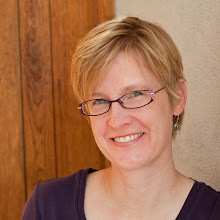I have happily found myself in the middle of piles of yarn. I am dyeing yarn for classes I am teaching later in the summer and fall and for a very exciting workshop I am taking later this summer and am generally feeling that some yarn management strategies are needed. I suspect that my partner would agree with that assessment.
Yarn Bombing is a term I learned from The Yarn Harlot. Apparently at knitting conferences (and I have never been to a knitting conference, but I would consider it as a recreational endeavor) people actually knit little things that they spread around the facility. Knitted wraps for trees and banisters, little knitted creations hanging from lamp pulls, socks on table legs... yarn bombing. My house wasn't so much bombed by finished items as by piles of dyed and undyed yarn. I will probably never dig my way out. Just warning you. (This would be why my partner is strongly advocating I have my own studio which is separate from the rest of the house. Yarn has a way of creeping out of it's room into all other corners of the place.)
(6/29/12: Here is an even better post about yarn bombing by The Yarn Harlot: http://www.yarnharlot.ca/blog/archives/2012/06/29/site_specific_art_installation.html)
The practice of dyeing my own yarn seems to increase the general yarn clutter. I have run through all the undyed student yarn I have here (don't worry, there is more in storage which will be coming back to the dye pots soon) and have moved on to dyeing experiments (more on this in a future post). The dyeing process itself adds to the yarn chaos. It needs to be prepped and then it gets dyed and then it sits around drying and then it has to be balled up and readied for classes. During all of this I get interrupted by work and babies and my general distractedness and thus, yarn bomb.

This yarn is gorgeous. It is Vevgarn from Norway. I bought it from Noel at Norsk Fjord Fiber who was infinitely helpful and had every color I wanted in stock. It comes in hundreds of colors, though I dyed some myself and found that is dyes amazingly well. I haven't woven a tapestry with this yarn yet, but I believe Tommye Scanlin uses it a lot and her tapestries are gorgeous... which seems a good recommendation for the basic materials.
My father has always been an apron advocate. This (dye-spattered clothes) is what happens when you dye without using one (plus it is probably safer to wear long pants and covered shoes and wear an apron as the boiling acid-water is not the greatest thing to spill on yourself).
Personal Protective Equipment. Use it. Do not follow my example (despite it being 95 degrees outside and over 100 in the dye shed). I do wear my respirator and goggles Dad... and I will buy an apron the next time I'm shopping the online chemistry store (do they have brick and mortar chemistry stores? I was in an old dusty one in Albuquerque at least a decade ago, but I don't think it is there anymore. I need a new thermometer because I keep breaking mine and I think those glass pipets are really very cool.) Most of the dye comes out of my clothes as it hasn't been set with an acidic pH, but they are ever quite the same again once exposed to a dye day.
This is what Cassy thinks about yarn:
























